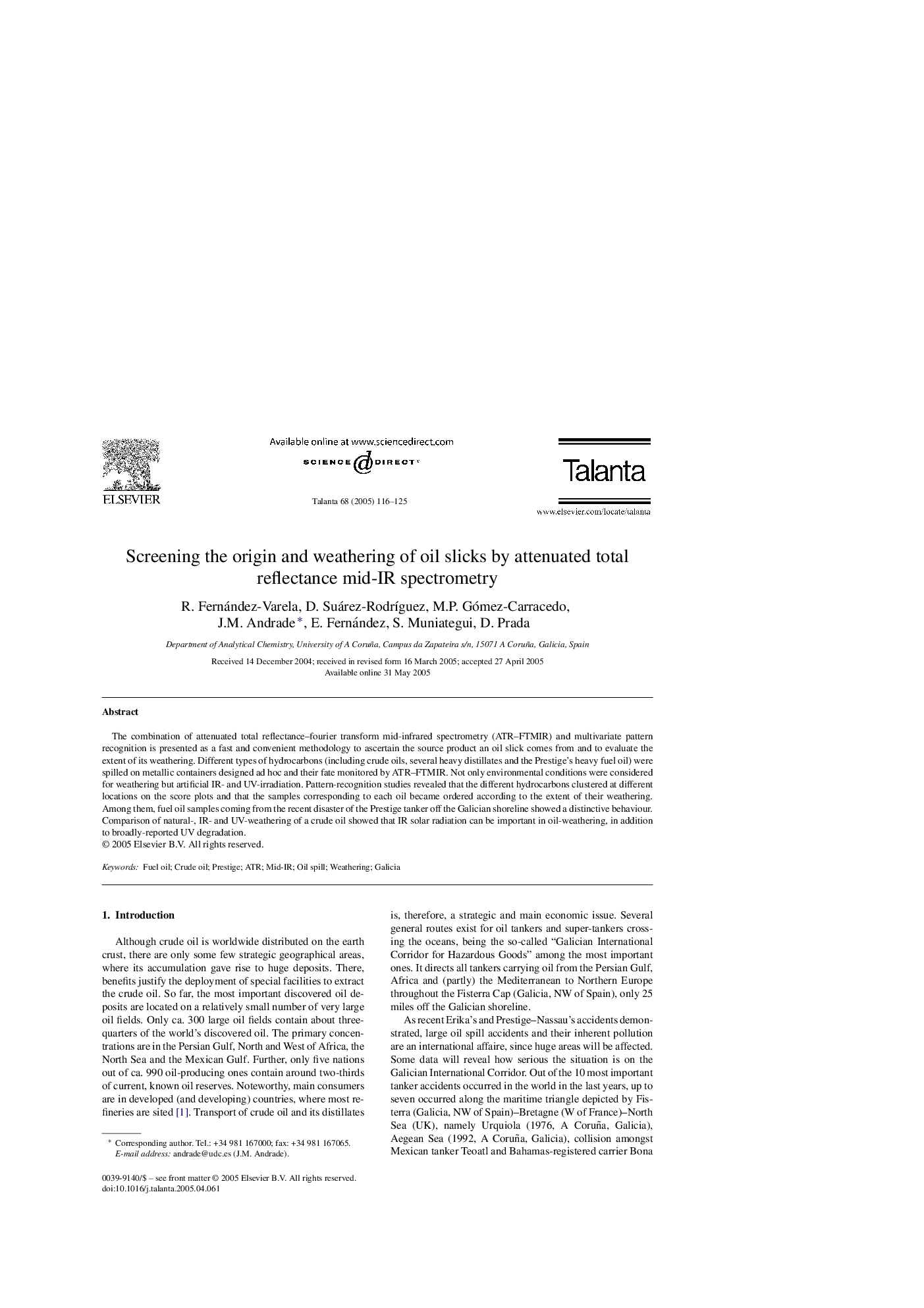| Article ID | Journal | Published Year | Pages | File Type |
|---|---|---|---|---|
| 10559934 | Talanta | 2005 | 10 Pages |
Abstract
The combination of attenuated total reflectance-fourier transform mid-infrared spectrometry (ATR-FTMIR) and multivariate pattern recognition is presented as a fast and convenient methodology to ascertain the source product an oil slick comes from and to evaluate the extent of its weathering. Different types of hydrocarbons (including crude oils, several heavy distillates and the Prestige's heavy fuel oil) were spilled on metallic containers designed ad hoc and their fate monitored by ATR-FTMIR. Not only environmental conditions were considered for weathering but artificial IR- and UV-irradiation. Pattern-recognition studies revealed that the different hydrocarbons clustered at different locations on the score plots and that the samples corresponding to each oil became ordered according to the extent of their weathering. Among them, fuel oil samples coming from the recent disaster of the Prestige tanker off the Galician shoreline showed a distinctive behaviour. Comparison of natural-, IR- and UV-weathering of a crude oil showed that IR solar radiation can be important in oil-weathering, in addition to broadly-reported UV degradation.
Related Topics
Physical Sciences and Engineering
Chemistry
Analytical Chemistry
Authors
R. Fernández-Varela, D. Suárez-RodrÃguez, M.P. Gómez-Carracedo, J.M. Andrade, E. Fernández, S. Muniategui, D. Prada,
